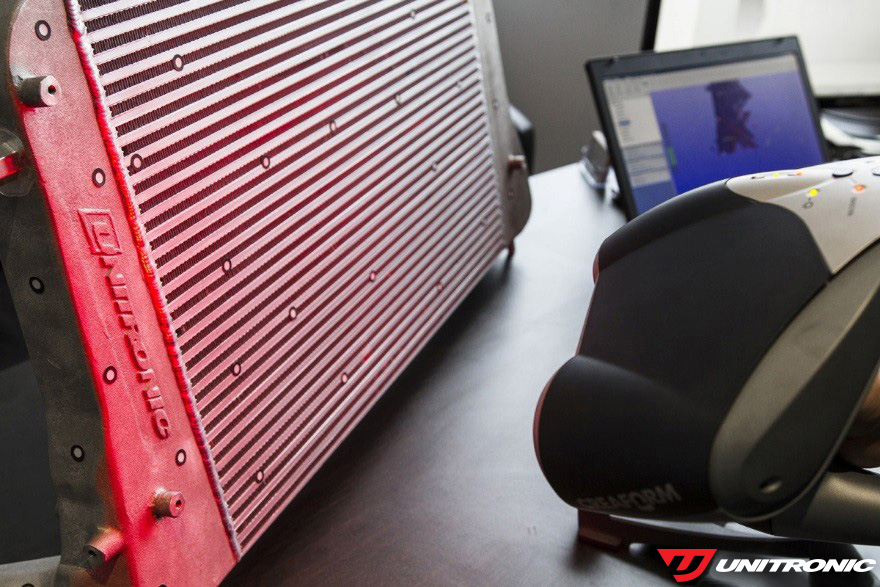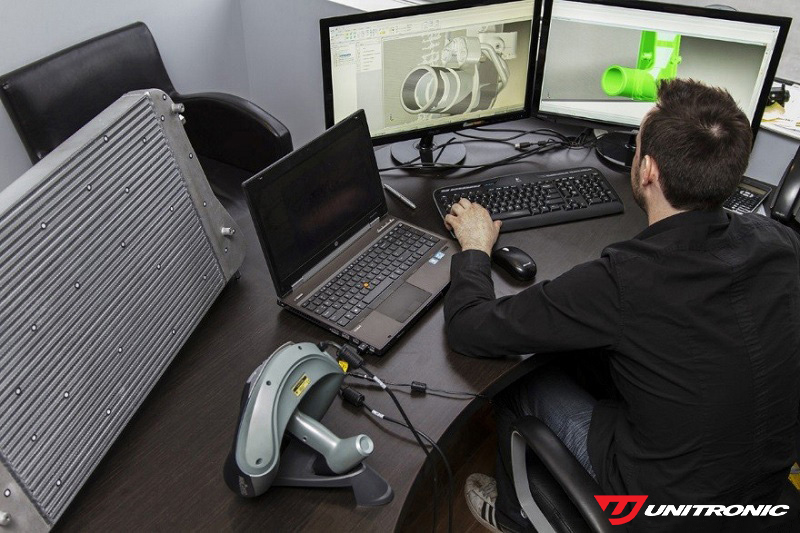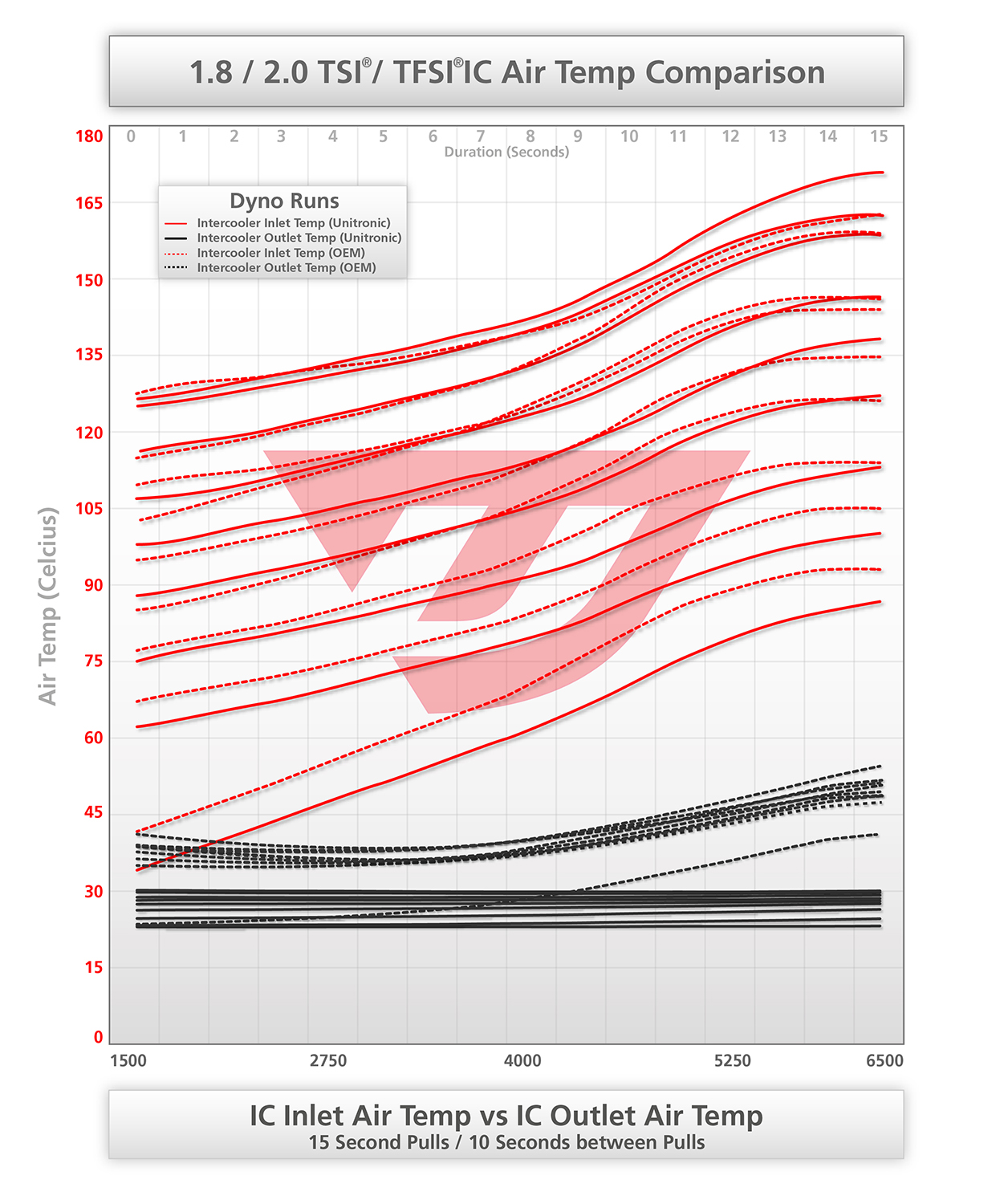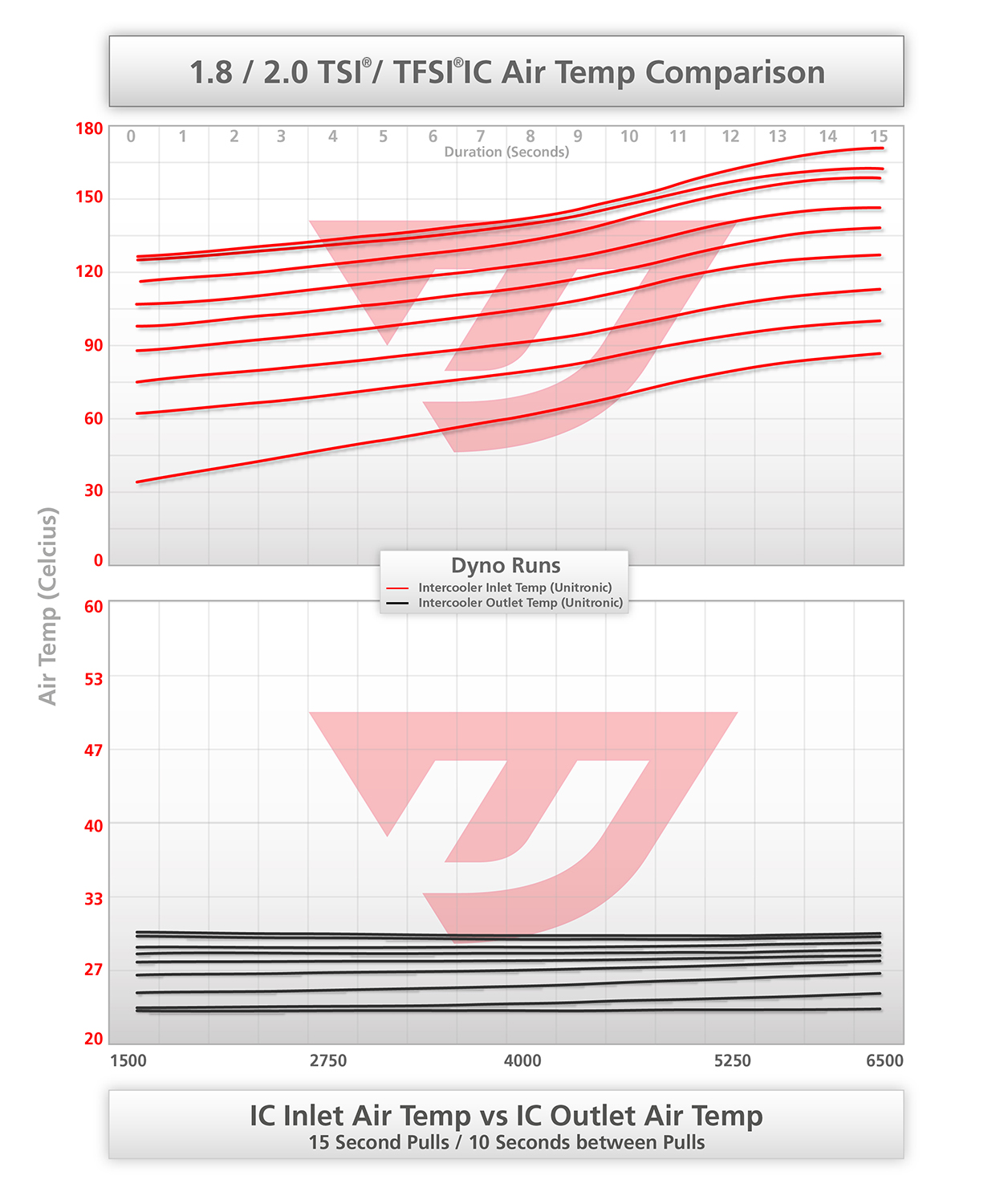 (0)
(0)





Unitronic’s philosophy in designing Performance Hardware starts with analyzing the OEM component(s) in various street and track environments to determine its overall performance and thus its likely shortcomings in performance driven settings where our clients demand it. When embarking on designing the ultimate intercooler upgrade, it was top priority to achieve our goals in providing optimum cooling efficiency, significant reduction in heat-soak, direct OEM replacement fitment, and top tier quality. It was important to deliver all of this, while ensuring a competitive performance to cost ratio for our end-users.
All of Unitronic’s Performance Hardware products are designed using our in-house 3D scanner, data acquisition tools, and 3D modeling software. With these industry-leading resources in-house at our disposal, design aspects and fitment tolerances can be as finite up to four one-thousands of an inch (0.004”), often times more precise than manufacturing equipment can ensure, resulting in the maximum fitment precision on each and every product. After platform constraints and OEM components are 3D scanned, all data is imported into our modeling software, where we can observe and interact with the OEM parameters to design an upgraded performance product to fit these constraints, as mentioned, perfectly; while ensuring that technical aspects relating to performance and engineering principles are deployed. These elements combined allow for less development prototyping, faster validation, and strict quality control.

Unitronic’s bar and plate intercooler core is constructed of T5052 Aluminum featuring a unique staggered and louvered fin configuration to maximize efficiency, significantly reducing charge air temperatures allowing for cooler, more dense air to be ingested by the engine; ultimately resulting in an increase in engine performance. Unitronic’s core has 64% more volume than stock measuring 23.5” x 2” x 16.5” allowing for a greater volume of air to exchange heat, which, combined with a proper fin configuration, allows for maximum efficiency and reduction in heat-soak thresholds without producing a significant pressure drop.
Entering and exiting the core is an important aspect and should not be forgotten about. With implications regarding airflow as well as fitment, the end tanks are also something that Unitronic went through many working prototypes and production samples prior to it being approved for production. Unitronic’s T6061 cast Aluminum end tanks are designed with tolerances of +/- 0.020” to ensure perfect fitment across all of our production units, paying very close attention to its multiple OEM mounting points with the OEM radiator/support, A/C Condenser, and lines constraints. Additionally, sufficient spacing between the A/C condenser and radiator was ensured to limit unwanted heat transfer between the elements. Inlet and outlet design has also been optimized to ensure smooth airflow through the intercooler and feature a “bead roll” to ensure our multi-ply silicone hoses stay securely connected. Attention to detail is top priority, therefore full compatibility with the ozone sensor found on some models was ensured.

Unitronic performed back to back stress testing using its 2015 VW Jetta 1.8TSI Gen3 to show the performance benefits over the OEM Intercooler. The vehicle was equipped with Unitronic’s 1.8/2.0 TSI Gen3 Turbo-Back Exhaust and 1.8/2.0 TSI Gen3 Cold Air Intake during the tests. Testing was done on our in-house Dynapack Chassis Dyno and appropriate data acquisition tools were used collect pre- and post- intercooler air temperatures. All data was collected on the same day, starting with the OEM Intercooler testing first. Temperature probes were tapped into the inlet and outlets of the intercooler cores. Ambient air temperature varied slightly throughout the day between 70-75 degrees Fahrenheit (21 – 24 degrees Celsius) and humidity was steady at around 50% using the Dynapack’s weather station. The testing consisted of 9 consecutive 15-second duration dyno runs (ramp test) allowing the vehicle to idle for 10-seconds in between each run for both the OEM and Unitronic Intercooler.

Unitronic’s Intercooler provides dramatic reductions in outlet temperatures (IATs), as the accompanied data graphs illustrate. By the end of the first run, the Unitronic Intercooler had already displayed an outlet temp. decrease of 17*C/-30*F at redline (6500rpm). On the ninth run and the end of the test, the Unitronic Intercooler showed its efficiency over the OE unit by reducing the outlet temperatures by 24*C/43*F when compared to the OEM 1.8 TSI Intercooler.
On each of the 9 runs, the Unitronic Intercooler outlet air temperatures at redline showed an increase no greater than than 1.8*C/3.3*F degrees from the intercooler outlet temperature at the start of each run. In fact, 2 of the 9 pulls done using the Unitronic Intercooler showed a decrease in intercooler outlet air temperatures compared to the starting outlet air temperature.
By the 9th run, Unitronic’s Intercooler resisted heat-soak and maintained efficiency, even under severe stress testing.




*Unitronic is not affiliated with any vehicle manufacturers. All Manufacturer and vehicle names and trademarks are used in this web site are for identification purposes only. All trademarks and trade dress such as Audi ®, Volkswagen ®, VW ®, Seat ®, Skoda ®, Porsche ®, Lamborghini® GTI ®, Golf ®,Golf R ®, Golf City ®, Alltrack ®, SportWagen ®, Cupra ®, Scirocco ®, Jetta ®, GLI ®, R32 ®, Rabbit ®, Passat ®, Passat CC ®, Tiguan ®, Beetle ®, New Beetle ®, EOS ®, Touareg ®, Phaeton ® DSG ®, S Tronic ®, TSI ®, TFSI ®, VR6 ®, A1 ®, A3 ®, S3 ®, RS3 ®, Q3 ® , A4 ®, S4 ®, RS4 ®, A5 ®, S5 ®,RS5 ® Q5 ®, SQ5 ®, A6 ®, S6 ®, RS6 ®, Q7 ®, SQ7 ®, A7 ®, S7 ®,RS7 ® A8 ®, S8 ®, R8 ®, TT ®, TTS ®, TTRS ®, Boxster ®, 911 ®, 996 ®, 997 ®, 991 ®, Panamera ®, Macan ®, 918 Spyder ®, Cayenne ®, Cayman ®, Huracan ®, Huracan Performante ® are registered trademarks of Volkswagen AG, Audi AG, and Porsche AG.